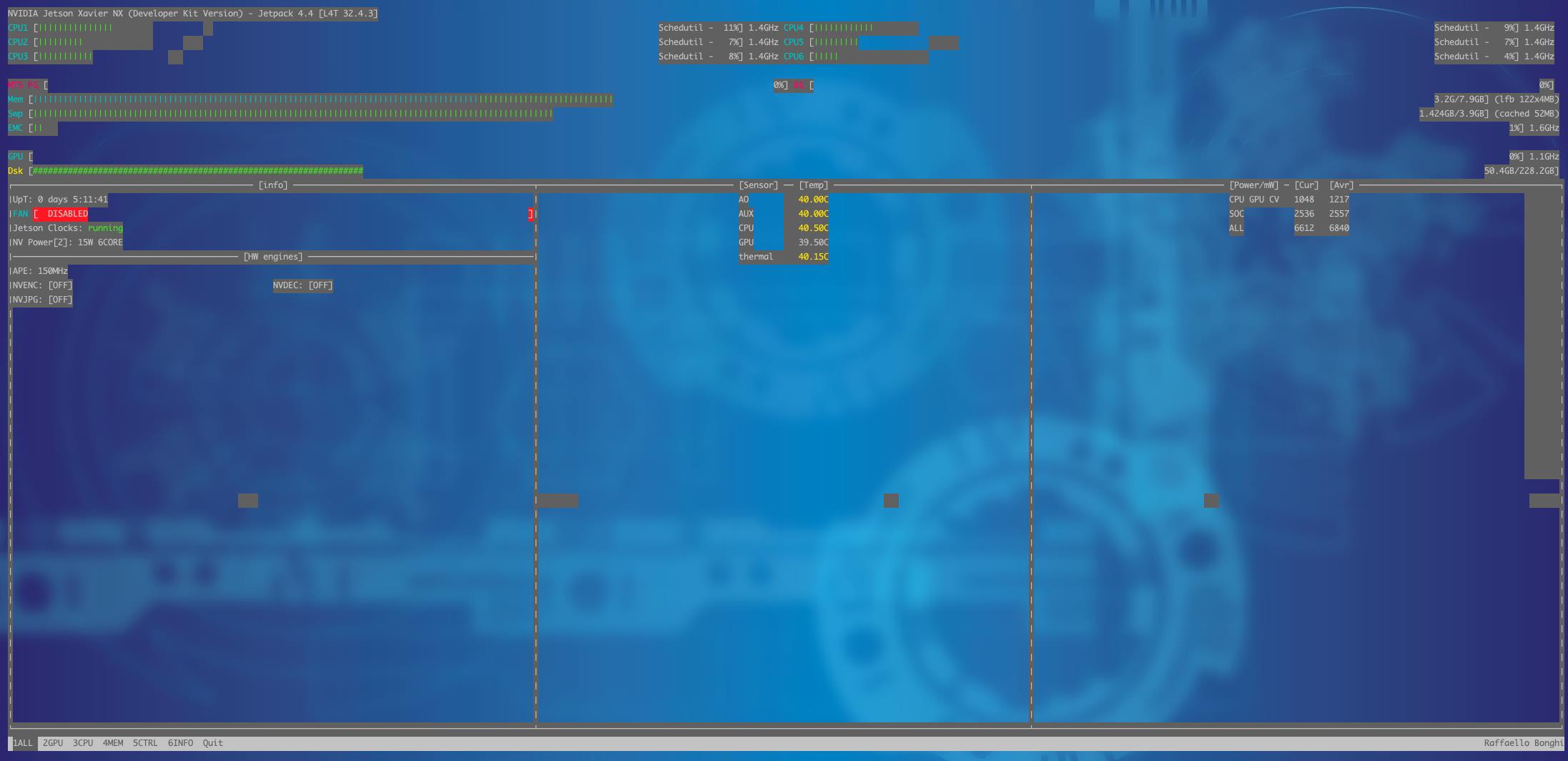深度学习系列5:jetson nano入门
Posted IE06
tags:
篇首语:本文由小常识网(cha138.com)小编为大家整理,主要介绍了深度学习系列5:jetson nano入门相关的知识,希望对你有一定的参考价值。
1. Jetson基本信息查询
使用github上的一个小工具检查jetson info
git clone https://github.com/jetsonhacks/jetsonUtilities
cd jetsonUtilities
./jetsonInfo.py
我这边返回如下信息:
NVIDIA Jetson Xavier NX (Developer Kit Version)
L4T 32.4.3 [ JetPack 4.4 ]
Ubuntu 18.04.4 LTS
Kernel Version: 4.9.140-tegra
CUDA 10.2.89
CUDA Architecture: 7.2
OpenCV version: 4.1.1
OpenCV Cuda: YES
CUDNN: 8.0.0.180
TensorRT: 7.1.3.0
Vision Works: 1.6.0.501
VPI: 0.3.7
ffmpeg n4.2.2-15-g6878ea5a44
另外,输入jtop可以对设备进行监控:

2. Jetson拉流
这里不能用imutil,改成cv2.VideoCapture与GStreamer后端一起使用:
import cv2
pipeline = "rtspsrc location=\\"rtsp://...:5554/mystream001\\" ! rtph264depay ! h264parse ! omxh264dec ! nvvidconv ! video/x-raw, format=(string)BGRx! videoconvert ! appsink"
capture = cv2.VideoCaputure(pipeline, cv2.CAP_GSTREAMER)
res, frame = capture.read()
capture.release()
...
这里解析一下pipeline:
- rtspsrc: 连接rtsp Server(IPC端)并获取数据。
- rtph264depay: 做为rtspsrc的下游模块,可以接收到rtp包,并遵循RFC3984的规范解包,解完的包会按照NAL的格式对齐;NAL包以PUSH的模式交给下游模块。
- h264parse的作用,顾名思义,用来分割输出H264帧数据
- omxh264dec(或者nv_omx_h264dec),硬件解码
- nvvidconv: 如名,进行转码
- video/x-raw, format=(string)BGRx! videoconvert 色彩空间转换
- appsink:允许应用程序获取处理后的数据。
3. Jetson推理
首先要安装pycuda:sudo pip3 install --global-option=build_ext --global-option="-I/usr/local/cuda/include" --global-option="-L/usr/local/cuda/lib64" pycuda
下面是一个示例代码,输入输出可以根据需要改变:
import tensorrt as trt
import os
import pycuda.driver as cuda
import cv2
import numpy as np
class TensorRTInference(object):
def __init__(self, engine_file_path, input_shape):
self.engine_file_path = engine_file_path
self.shape = input_shape
self.engine = self.load_engine()
def load_engine(self):
assert os.path.exists(self.engine_file_path)
with open(self.engine_file_path, 'rb') as f, trt.Runtime(trt.Logger()) as runtime:
engine_data = f.read()
engine = runtime.deserialize_cuda_engine(engine_data)
return engine
def infer_once(self, img):
engine = self.engine
if len(img.shape) == 4:
_, c, h, w = img.shape
elif len(img.shape) == 3:
c, h, w = img.shape
with engine.create_execution_context() as context:
context.set_binding_shape(engine.get_binding_index('input'), (1, 3, self.shape[0], self.shape[1]))
bindings = []
for binding in engine:
binding_idx = engine.get_binding_index(binding)
size = trt.volume(context.get_binding_shape(binding_idx))
dtype = trt.nptype(engine.get_binding_dtype(binding))
if engine.binding_is_input(binding):
input_buffer = np.ascontiguousarray(img, dtype)
input_memory = cuda.mem_alloc(img.nbytes)
bindings.append(int(input_memory))
else:
output_buffer = cuda.pagelocked_empty(size, dtype)
output_memory = cuda.mem_alloc(output_buffer.nbytes)
bindings.append(int(output_memory))
stream = cuda.Stream()
cuda.memcpy_htod_async(input_memory, input_buffer, stream)
context.execute_async(bindings=bindings, stream_handle=stream.handle)
cuda.memcpy_dtoh_async(output_buffer, output_memory, stream)
stream.synchronize()
#res = np.reshape(output_buffer, (2, h, w))
return output_buffer
# 这段是调用代码
import pycuda.autoinit
INPUT_SHAPE = (17, 17)
engine_file_path = '*.trt'
img_path = '10.png'
img = cv2.imread(img_path) # hwc
img = cv2.resize(img, (17, 17))
img = np.transpose(img, (2,0,1)) # chw
trt_infer = TensorRTInference(engine_file_path, INPUT_SHAPE)
engine = trt_infer.load_engine()
for i in range(1000):
trt_infer.infer_once((img-255)/122)
4. Jetson Linux Multimedia API
以上是关于深度学习系列5:jetson nano入门的主要内容,如果未能解决你的问题,请参考以下文章